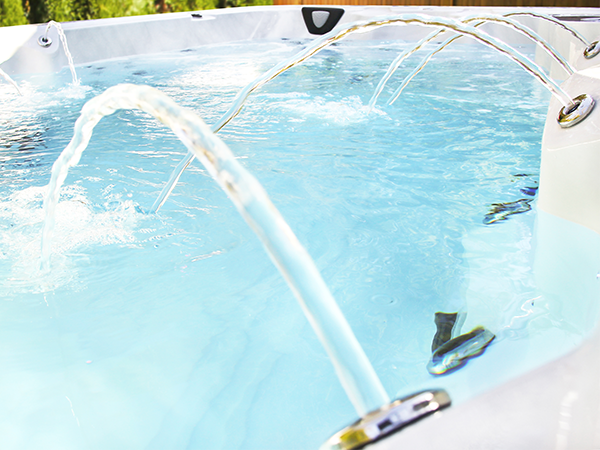Hot Tub and Spa Care for First-Time Owners: A Beginner’s Guide

Hot Tub and Spa Care for First-Time Owners: A Beginner’s Guide
- October 18, 2024
- Hot Tubs
Welcome to the world of hot tub ownership!
To maximize your investment and your enjoyment, we will walk you through the essential steps for initial setup, water treatment, regular maintenance, and how to troubleshoot common problems.
Initial Setup
1. Selecting the Perfect Spot
Before installing your hot tub, it’s crucial to find the ideal location. Seek out a flat and sturdy area capable of supporting the weight of the tub when it’s filled with water and occupants. Take into account factors like the availability of electrical outlets, proper drainage, and your desired level of privacy to ensure a comfortable experience.
2. Electrical Considerations
Most hot tubs necessitate a dedicated electrical circuit, generally operating at 240 volts, which must be installed by a qualified electrician. It’s important to have all electrical work done before positioning your hot tub. Be sure to consult the manufacturer's guidelines for any specific requirements, as certain models might require a sub-panel for proper operation.
3. Filling the Hot Tub
Once the electrical setup is complete and the tub is in place, it’s time to fill it with water. Use a garden hose and fill it to the recommended water level, usually indicated by a marker inside the tub. Make sure to remove any debris from the water as you fill, and avoid using hot water from your tap, as this can lead to overheating.
Water Treatment
1. Achieving Water Balance
Once you’ve filled your hot tub, the next step is to balance the water chemistry, which is essential for avoiding skin irritation and safeguarding the tub’s components. Begin by testing the water using a test kit or strips. Pay special attention to these parameters:
pH Levels: Target a pH range of 7.2 to 7.8. A high pH can lead to cloudy water and scale deposits, while a low pH can irritate skin and damage equipment.
Alkalinity: The total alkalinity should be maintained between 80 and 120 ppm (parts per million). This helps to keep pH levels stable.
Chlorine/Bromine: Employ chlorine or bromine as your sanitizer of choice. Target a chlorine concentration of 3-5 ppm or a bromine concentration of 3-5 ppm.
Make adjustments as necessary with the appropriate chemicals, and always adhere to the manufacturer’s guidelines when adding substances to your hot tub.
2. Water Sanitization
Sanitizers play a vital role in ensuring that your hot tub water remains clean and safe for use. The most widely used options are chlorine and bromine. Chlorine acts rapidly but may irritate the skin for some users, while bromine is milder and particularly effective in warmer water. Alternatively, you might explore other sanitizing methods such as mineral systems or ozone generators, which can help minimize the quantity of chlorine or bromine required for effective sanitation.
Routine Maintenance
1. Regular Testing
Test the water at least once a week, or more often if you use your hot tub frequently. Regular testing will help you catch any imbalances early and keep the water safe.
2. Cleaning the Filters
Filters are vital for maintaining water clarity and quality. Clean your filters every few weeks and replace them according to the manufacturer's recommendations, typically every 1-2 years. To clean your filter, remove it and rinse it thoroughly with a hose, or soak it in a filter cleaner solution for a deeper clean.
3. Water Changes
Depending on usage, you should change the water in your hot tub every 3-4 months. This helps keep the water fresh and reduces the buildup of contaminants. Before refilling, clean the interior surface with a non-abrasive cleaner.
4. Cover Maintenance
Your hot tub cover protects the water from debris and helps maintain temperature. Clean it regularly with a vinyl cleaner to prevent mold and mildew. Additionally, keep the cover on when the hot tub is not in use to minimize evaporation and heat loss.
Troubleshooting Common Issues
1. Cloudy Water
Cloudy water can be caused by several factors, including improper water balance, inadequate sanitization, or filter issues. Test the water and adjust pH and alkalinity levels. If the issue continues, check and clean the filter, and consider shocking the water with a higher dose of sanitizer.
2. Unpleasant Odors
If you notice a strong chemical smell, it may be a sign of an imbalance in the water chemistry or the presence of bacteria. Test and balance the water, and shock the hot tub if necessary. If the smell continues, inspect the filter and consider a thorough cleaning of the entire system.
3. Low Water Levels
Frequent low water levels can be a sign of a leak. Regularly check the area around your hot tub for signs of moisture or water accumulation. If you suspect a leak, it’s best to consult a professional for repairs.
4. Hot Tub Not Heating
If your hot tub isn’t heating, check the thermostat settings first. Ensure that the filter is clean and that the water level is adequate. If the problem persists, it may indicate an issue with the heater or pump, which may require professional assistance.
Rising Sun Pools – Hot Tub & Spa Installation & Service in Raleigh
Rising Sun Pools’ hot tubs and spas offer the very best in both quality and design. We also offer a full line of hot tub and spa maintenance, programs, and products.
Looking to add a hot tub to your backyard paradise? Contact us today!
READ MORE:
Health Benefits of Soaking in a Hot Tub
Recent Posts
- Why It’s Time to Renovate That “COVID Pool” and Why Rising Sun Pools Builds Better
- Winter Water Chemistry: Why It Still Matters Even When You’re Not Swimming
- How to Winterize Your Aboveground Pool in the Triangle
- Energy-Efficient Hot Tub Tips for Triangle Homeowners
- Investment Protection: How Regular Fall Maintenance Saves You Thousands
- Leaf Management: Protecting Your Pool from Fall's Beautiful Mess
- Why September May Be the Best Time to Start Planning Your Pool Project
- Why Pool Customers Can Trust Rising Sun Pools
- Hurricane Season Pool Protection: Essential Steps for Raleigh Pool Owners
- Extend Your Swimming Season: Why a Heated Pool is Perfect for North Carolina's Mild Winters
